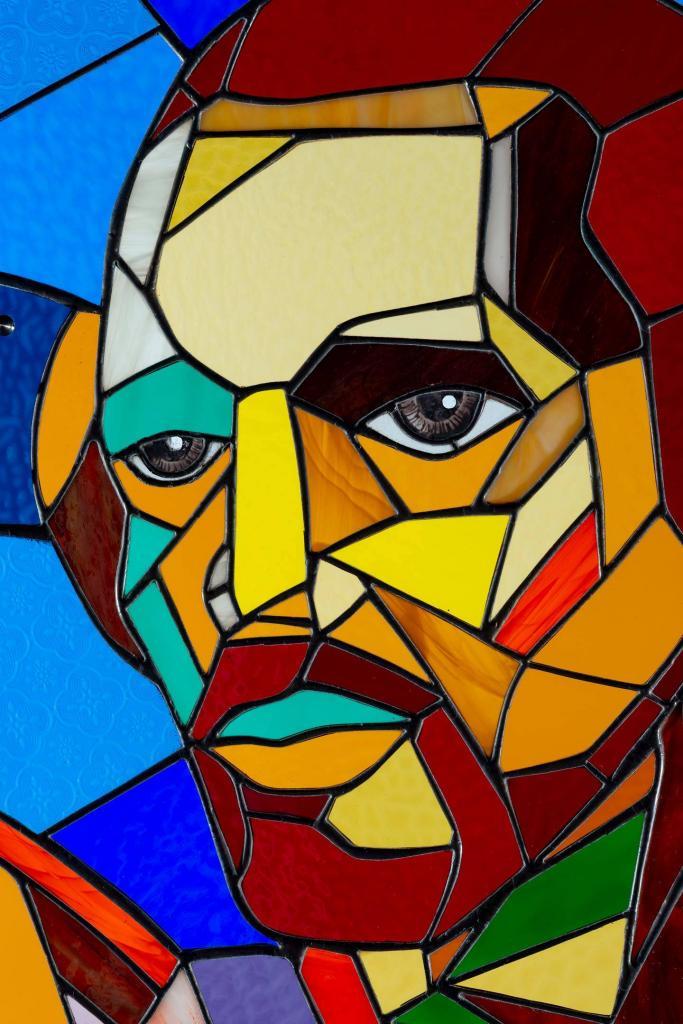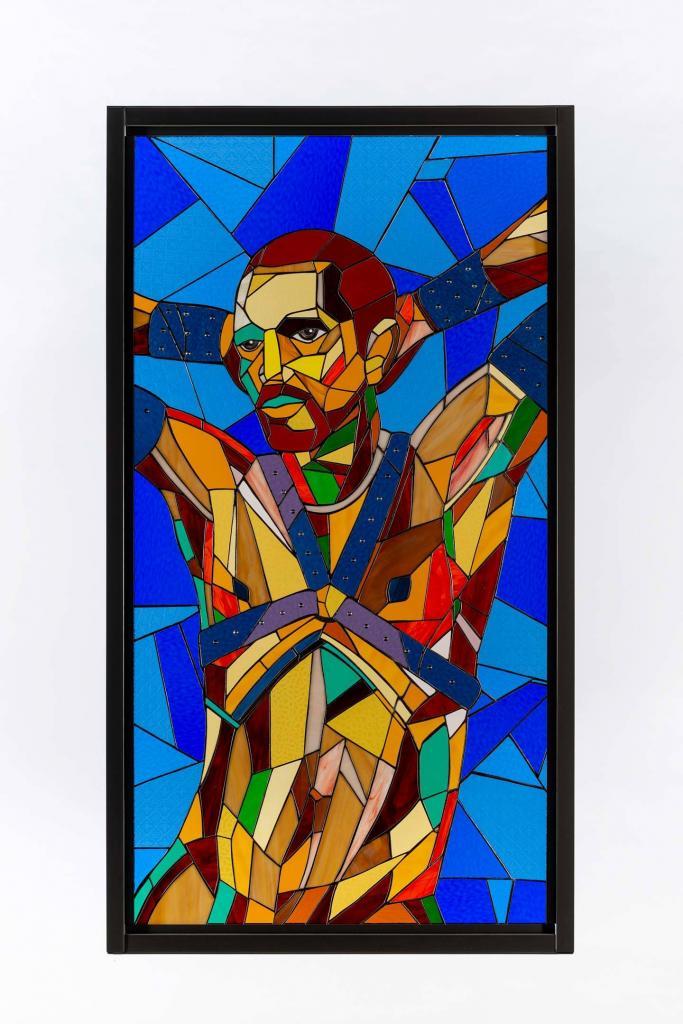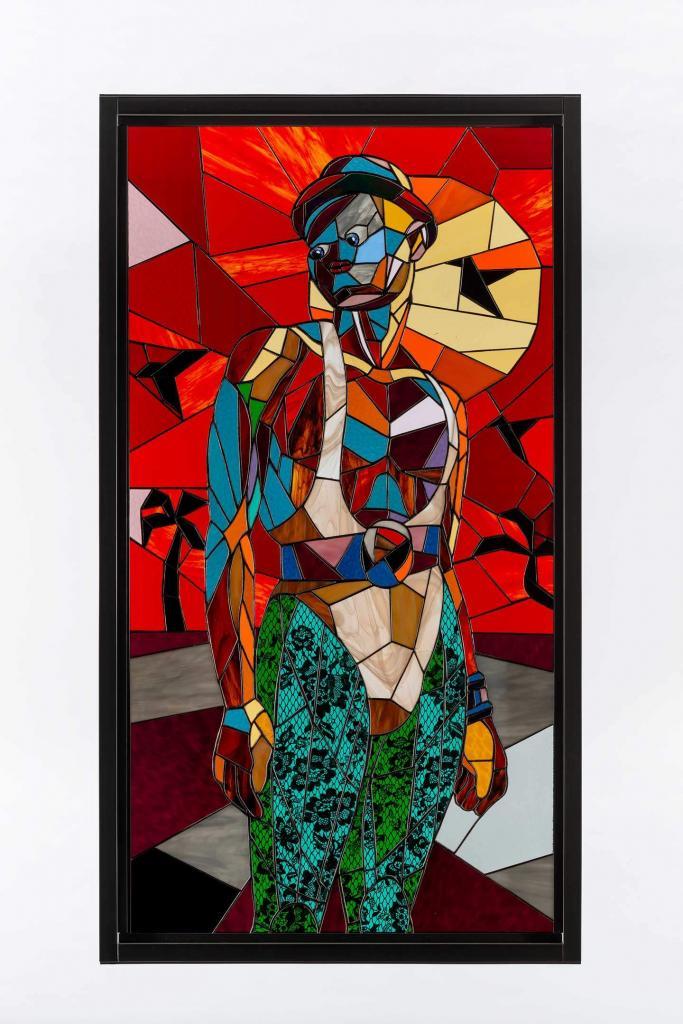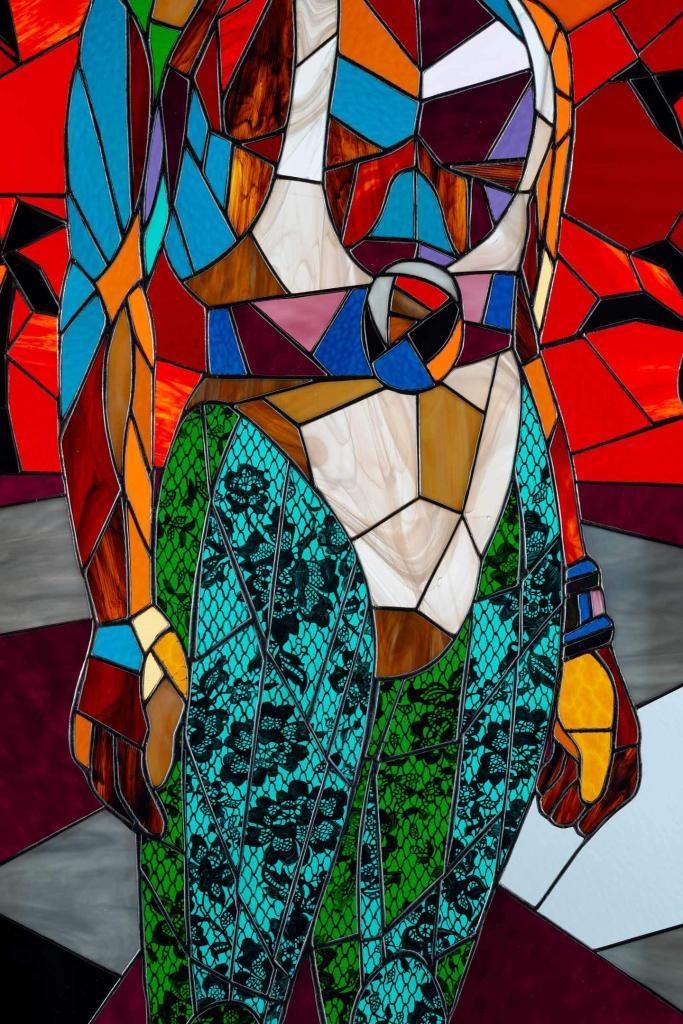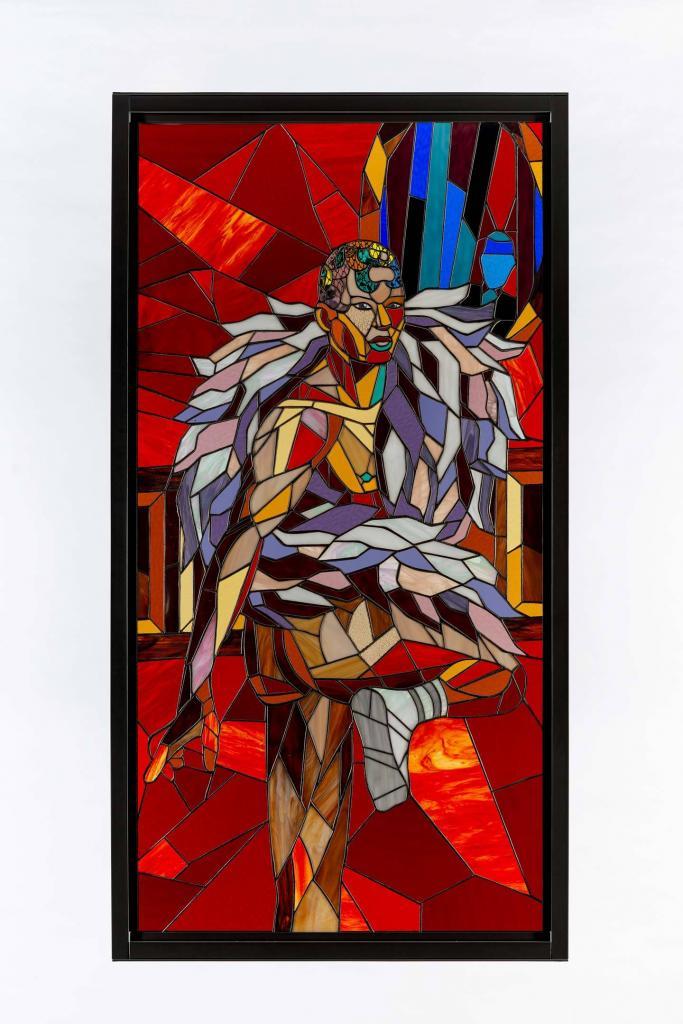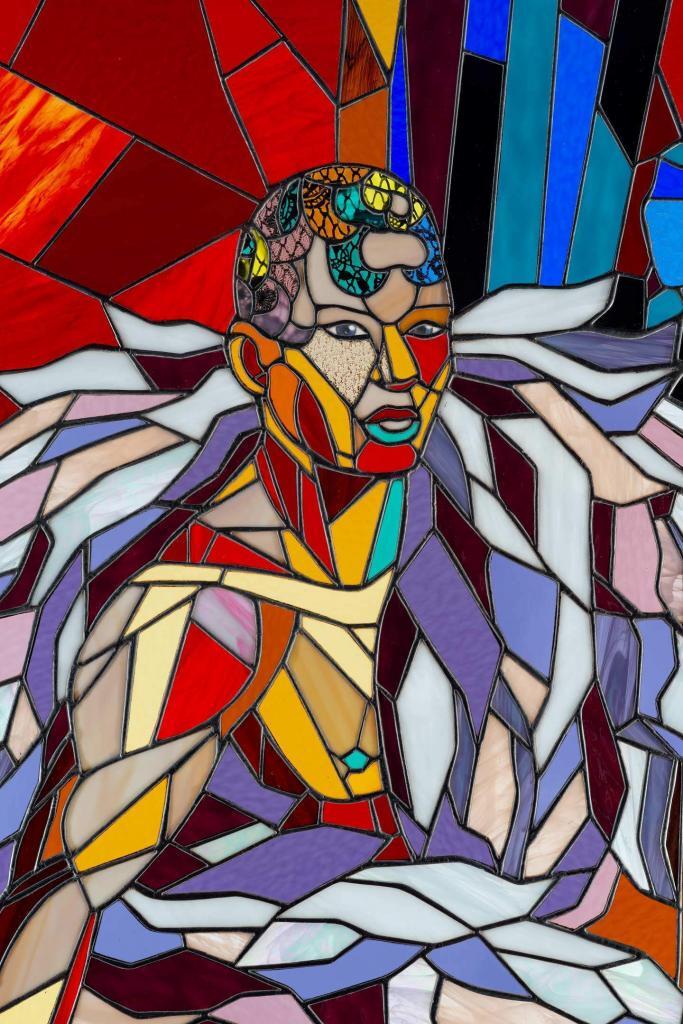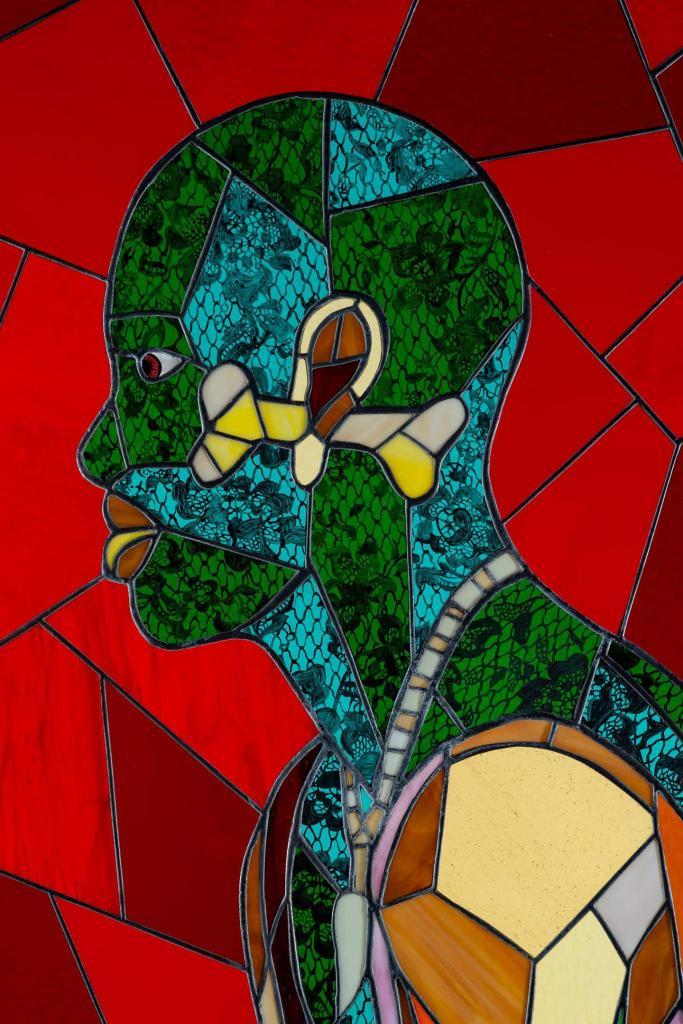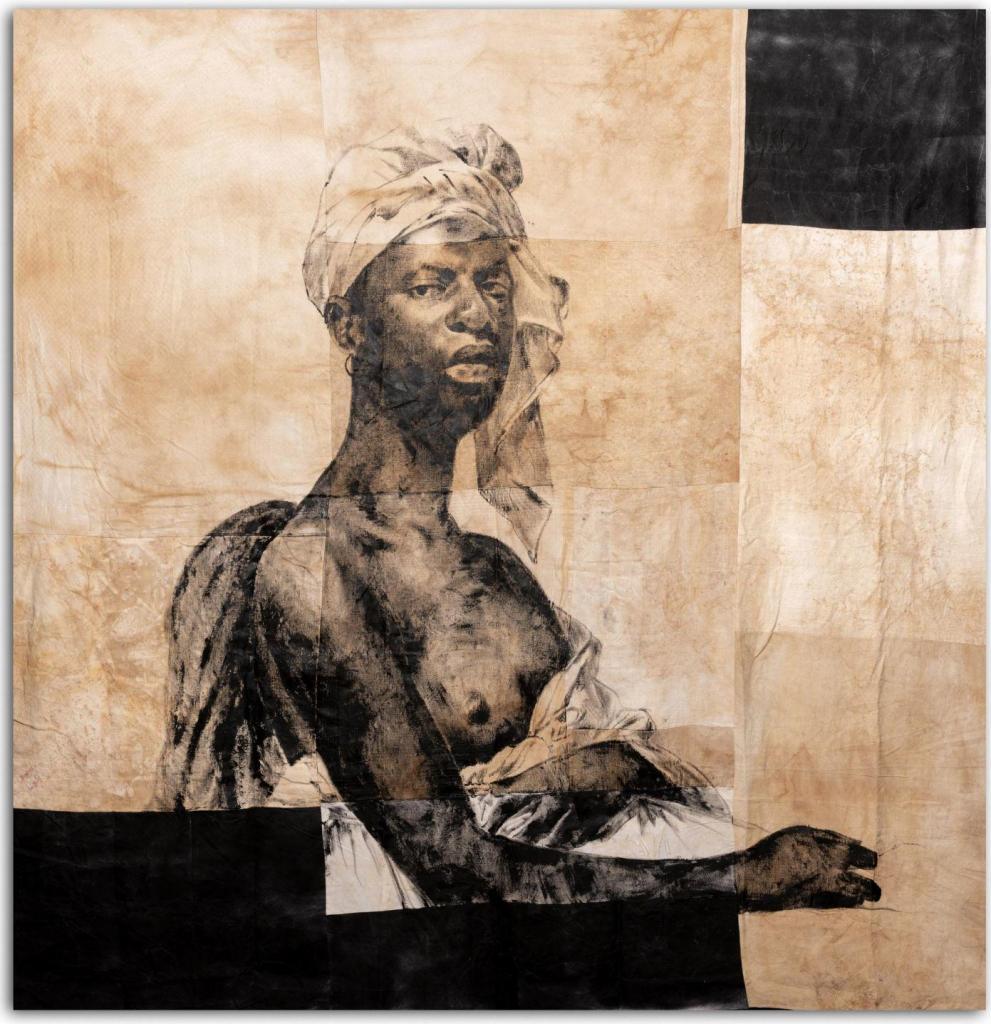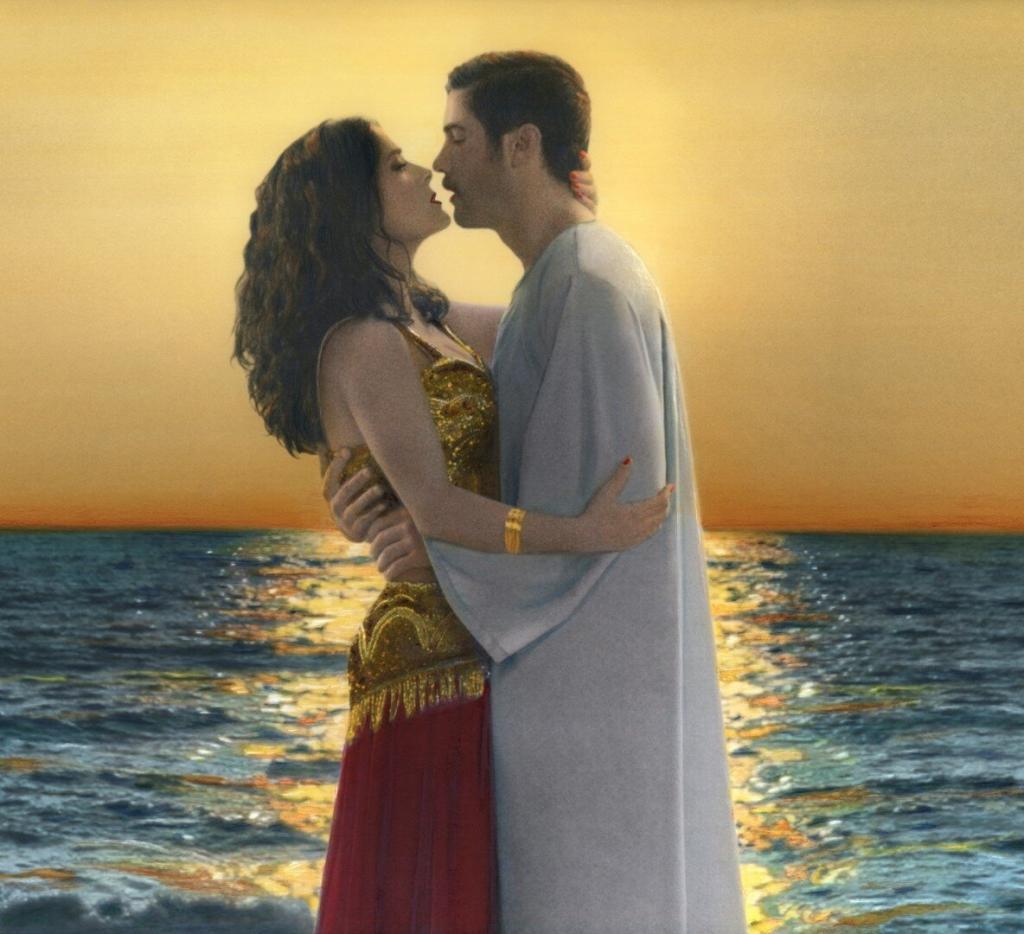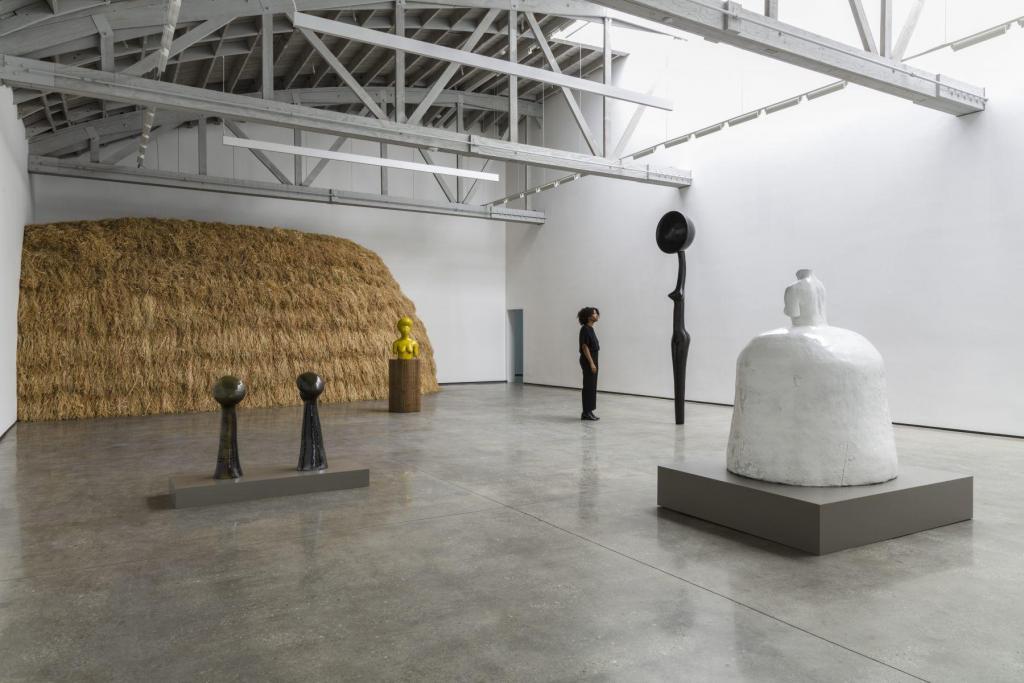Athi-Patra Ruga’s Myth-Making of Identities Historically Uncelebrated
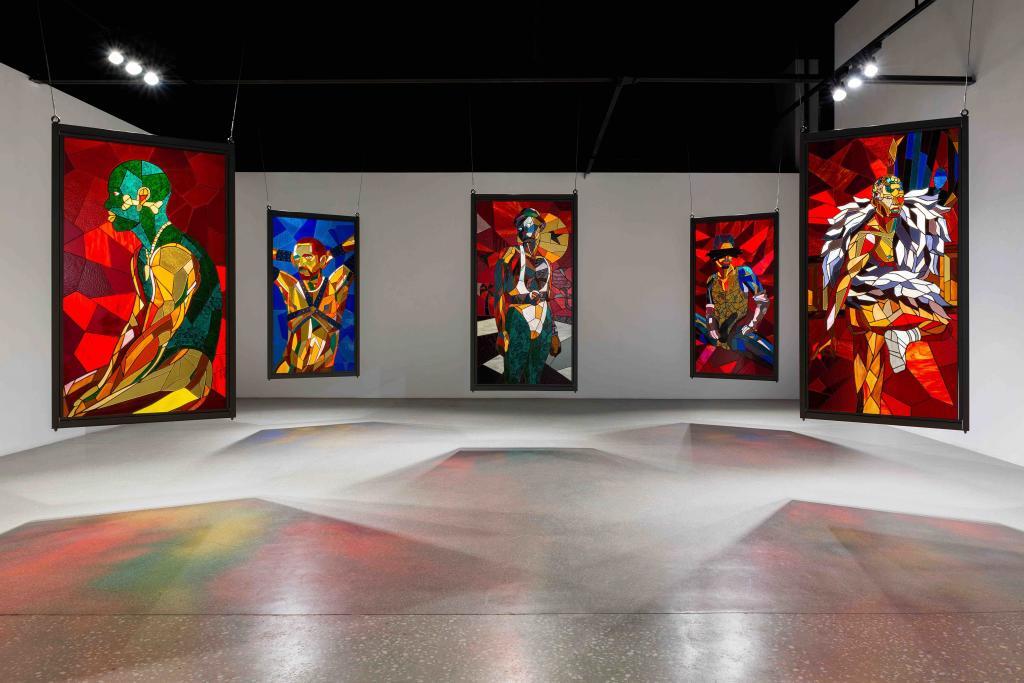
South African artist Athi-Patra Ruga’s current exhibition at WHATIFTHEWORLD presents work in two techniques often associated with the aesthetics of church and home.
Part one, Interior/Exterior, includes five panels made in stained glass, an apprenticeship Ruga began relatively recently, first exhibiting the medium in 2013. Part two, Dramatis Personae, uses the textile technique of petit point, a mainstay of the artist’s practice for the past fifteen years, in four new works accompanied by one photographic portrait. Across media, Ruga’s aesthetic of strong primary colours defines portraits informed by his complex myth-making of identities historically uncelebrated.
Stitch and glass are far from Ruga’s only materials – performance, photography, video and printmaking make appearances in his earlier work. But here, he communicates content that has become familiar to performance and photography in the materials of craft. Viewers may recognise characters from earlier works such as The BEATification of Feral Benga (2017-), a performance tribute to the Senegalese cabaret dancer Francois “Feral” Benga who worked at the Folies Bergère in Paris during the 1920s. In stained glass Ruga clads the figure in A Sight/Site For Contemplation (2020) with a plume boa. In its backwards glance, the work offers the only gaze of the whole exhibition that is overtly directed at the viewer.
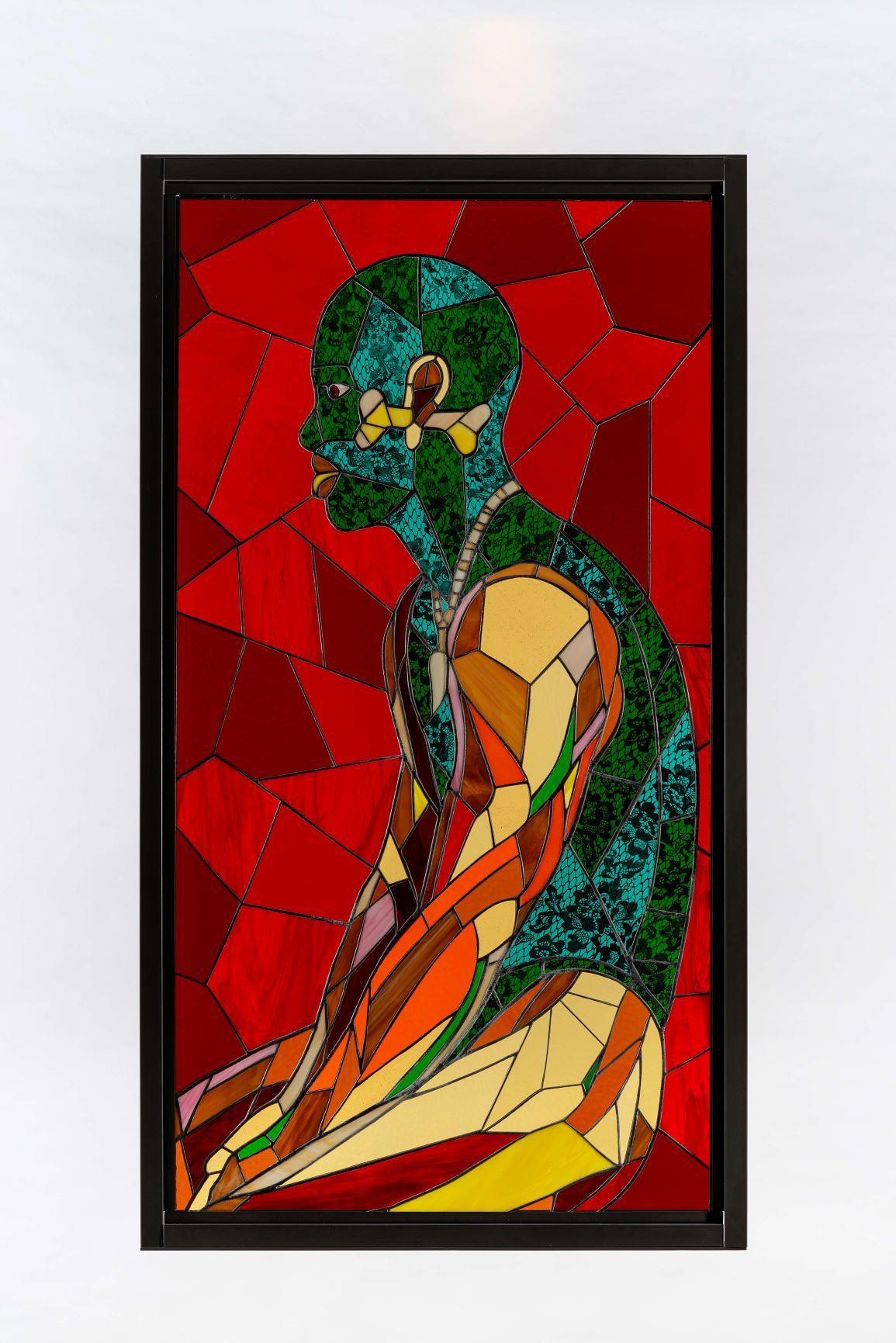
Artwork size: 170 x 90 cm. Framed size: 180 x 100 x 4 cm © Credit Photo Matthew Bradley. Courtesy of WHATIFTHEWORLD
In fact, each of the faces in the stained glass series have a solemnity which suggest – despite the potential for voyeurism – that the subject is far more preoccupied with thoughts of their own. Literally pierced as the title suggests, Yellow Bone (2020) – a vernacular reference to mixed black ethnicity – sits in profile. Sections of stained glass detail the musculature of thigh and arm, while the torso and head are covered in a continuous pattern of painted lace. The (presumably) leather cuffed and harnessed Swazi Youth After (2019) and spandex suited The Speller, The Killer (2020) both look beyond the viewer to points on their lower right.
In contrast, Castrato As [the] Revolution (2020) is credited as Ruga’s imagined self-portrait. Erect penis in hand, his eyes of are concealed behind censor’s tape. “By blackening out his eyes,” the exhibition catalogue offers, “Ruga as a draftsman performs a theatrical self-erasure or self-censorship as a poignant mimicry of the violence enforced by the state, religious and political stakeholders, historians, critics, and gate-keepers.” Collectively, the group suggest little interest in who may be watching them.
![Athi-Patra Ruga, Castrato As [the] Revolution, 2020. Stained glass, lead, and powder-coated steel. Artwork size: 170 x 90 cm. Framed size: 180 x 100 x 4 cm © Credit Photo Matthew Bradley. Courtesy of WHATIFTHEWORLD](http://s960436671.onlinehome.fr/wp-content/uploads/2020/08/interior-exterior-dramatis-personae-athi-patra-ruga-art-contemporain-whatiftheworld-3-artskop3437-e1597332341217.jpg)
Stitch is used to construct the works in Part Two, with one exception: the character Inyanga Yenkanga (2020) who appears in both a photographic portrait and textile.1Somewhat confusingly for textile vocabulary, the term tapestry is used interchangeably to refer to weaving with a discontinuous weft, as well as needlework stitched into a background fabric which Ruga uses. Dramatis Personae revolves around a complex narrative of characters based in Azania, the ancient Greek name for southeast Africa.
The works are part of Ruga’s ongoing Lunar Songbook Cycle, which the exhibition catalogue describes as a “trans-media body of work informed by Southern African astronomy and a more ecological way of recounting time”. Characters emerge from a mix of literary equivalents originally published by Lovedale Press, a printing press in the Eastern Cape started in 1823, and ancient Greek myths. In the exhibition catalogue, Ruga’s inspirations are recounted in a text credited as a collaboration between Lindsey Raymond and the artist. Reading this information is not only crucial to understanding the series but – I would argue – a further formal outcome of the research and invention Ruga employs as an artist.
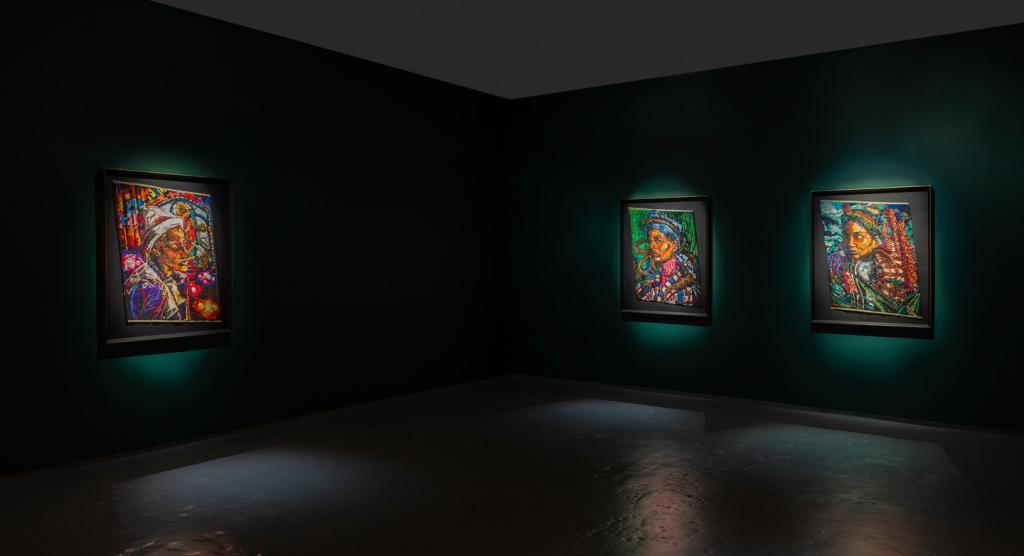
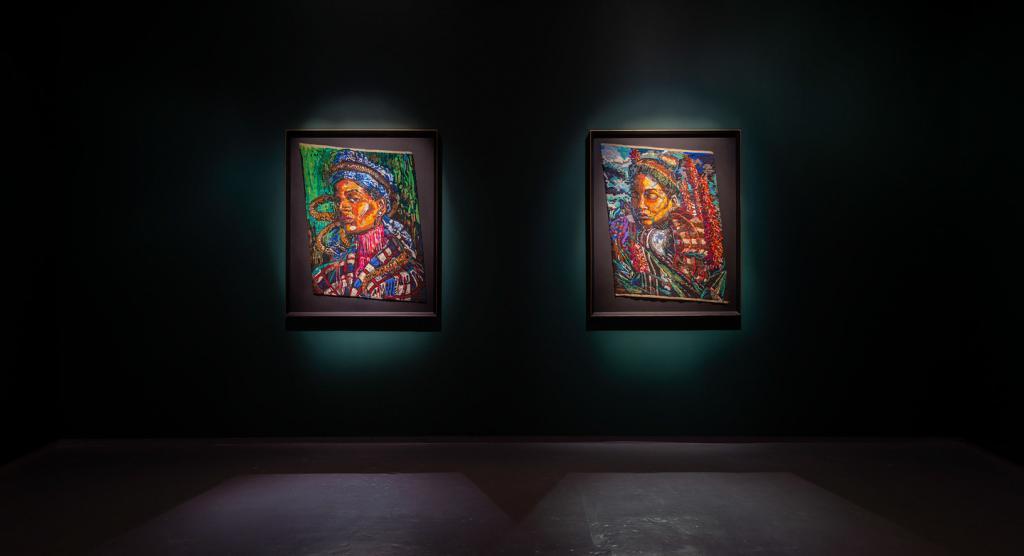
I will risk stating the painfully obvious: the stained glass portraits of Part One are male; the textile portraits of Part Two are female. Even to write this observation feels like a failure of the first test of understanding nonbinary identities that have, until recently, enjoyed limited representation in craft materials. But reworking to make anew, rather than wholesale avoidance of historical associations seems to be a place Ruga occupies with intention.
Ruga’s narratives of ultimately triumphant female protagonists draw storylines both from Greek mythology and characters from the Lovedale Press books; as alternatives to the biblical narratives of stained glass Ruga’s glass panels instead hold identities the exhibition catalogue acknowledges to be “unrecorded, misrepresented, and forgotten in history”.

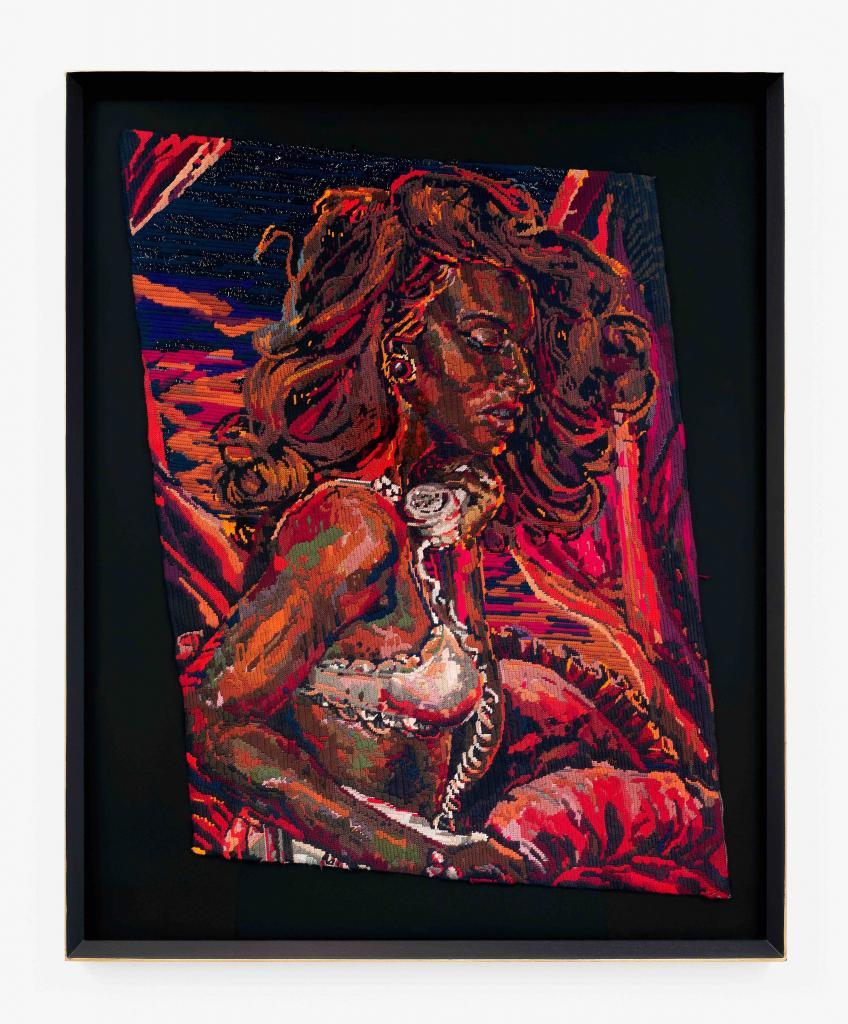
Clytemnestra, 2020. 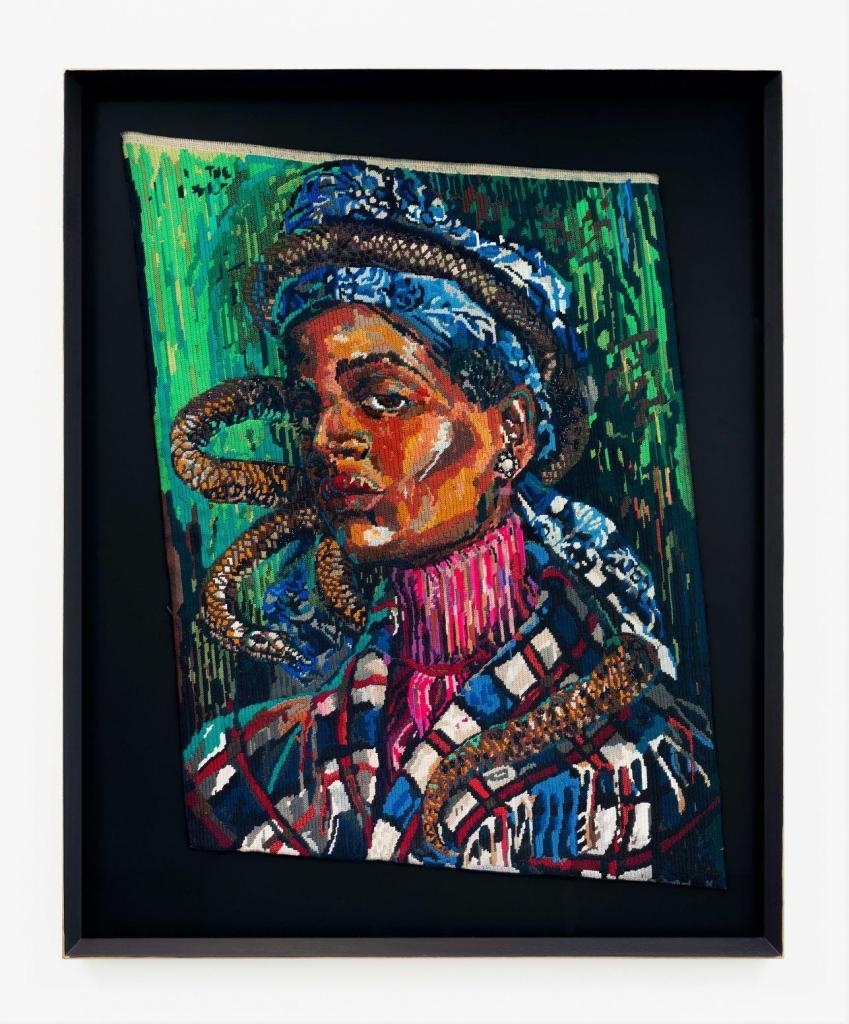
Unobantu Nomajola, 2020.
Ruga’s portraits celebrate identities previously denied. While unplanned, in this exhibition – adapted online because of the pandemic – stained glass is well served by the backlighting of online viewing; textiles fair less favourably in photographic documentation and here is no exception.
While the coloured light cast by the stained glass intended to reach my body in the gallery is impossible to replicate online, with the support of the comprehensive exhibition catalogue it remains feasible to access a good portion of Ruga’s work through our computer screens. That in itself feels apt. This is an exhibition far more interested in what is possible, than dwelling on what is not.

